Slow-Braised Lamb Ragu with Rigatoni and Whipped Ricotta
Winter’s chill begs for a robust dish.
One that demands an equally powerful wine alongside, too.
So stir up a big pot of “Slow-Braised Lamb Ragu with Rigatoni and Whipped Ricotta” and pop open a bottle of Italian Barolo — and you can’t go wrong.
The recipe — and pairing — is from the new “Wine Food: New Adventures in Drinking and Cooking” (Lorena Jones Books), of which I received a review copy.
It was written by Dana Frank, a Portland sommelier who co-owns the wine bar Bar Norman and urban winery Bow & Arrow; and cookbook writer Andrea Slonecker.
Packed with more than 75 recipes, this book makes pairing easy and understandable, by not only suggesting the best wine for each dish, but giving recommended producers, too.
Why does Muscadet go so well with a recipe for setting up an “Oyster Bar, For A Shucking Good Time” with cucumber-grapefruit granita, ginger mignonette, and fennel-apple relish? Because it is “replete with mineral and saline notes,” Frank and Slonecker write, just like oysters are.
What is Malvasia? And why does it go so well with “Melon and Prosciutto with Radishes, Avocado, and Mint”? It’s a varietal grown in Italy, Slovenia, Spain, Portugal, and parts of California and South America. Have you ever drunk Malmsey Madeira? It’s made from malvasia grapes. While that is a sweet example, the dry version is full of tropical fruits, beeswax and chamomile, with just the right amount of acidity, which makes it an ideal partner for aromatic dishes like that one.
Barolo, as Frank and Slonecker explain, is made entirely of nebbiolo grapes grown in the Piedmont region, giving it strength, structure and elegance. Its tannins can be quite predominant, so Barolo is typically aged slowly to help tame them.
Since I already had a sample bottle of 2013 Pio Cesare Barolo on hand, which had been macerated on its skins for 30 days before being aged in oak for 30 months, that’s what I used with this dish. The inky wine has a whiff of eucalyptus that tickles the nose, along with notes of dark cherries, earth, pencil, roses and violets. It boasts a long finish and noticeable but not overpowering tannins.
A cup of the wine actually goes into the braising liquid for the lamb shoulder, along with canned whole tomatoes, tomato paste, oregano, garlic and red pepper flakes. If you can’t find boneless lamb shoulder easily, lamb stew meat also can be substituted. I actually used bone-in lamb shoulder chops, the closest my butcher shop had that particular day, so I added that option at the end of the recipe. Just cook the chops whole and on the bone. It makes for a little more work when it comes to shredding the meat later on, but it’s not too cumbersome.
The shredded meat is stirred back into the braising liquid to create a rich ragu. A genius touch comes after boiling the rigatoni and draining: You stir back in a little of the pasta cooking water to loosen up the noodles, along with fresh minced rosemary and oregano. That last-minute flourish of fresh herbs really brings the green, woodsy, and resiny characteristics to the forefront. Unlike the fresh herbs used to cook the ragu low and slow, which meld into the background of the sauce, this final addition really pops with herbaceousness you really notice. It also really amplifies the woodsy, wild herb notes in the wine.
The lamb ragu gets ladled over the pasta, before being finished with a big spoonful of ricotta whipped with whole milk and nutty tasting Pecorino Romano. The whipped ricotta adds a real milky richness and lushness that a mere sprinkle of Parmigiano just wouldn’t.
It’s a meaty, hearty, comforting pasta with just a tickle of heat on the throat.
Who wouldn’t want to drink to that? With a fine Barolo, of course.
Slow-Braised Lamb Ragu with Rigatoni and Whipped Ricotta
(Serves 6)
1 (2-pound) boneless lamb shoulder roast, halved (see Note)
2 1/2 teaspoons kosher salt, or to taste
1 tablespoon extra-virgin olive oil, plus more for finishing
1 large yellow onion, finely diced
1 (6-ounce) can tomato paste
1 cup dry red wine
1 (28-ounce) can whole peeled tomatoes
1/2 cup water
1/4 cup plus 2 tablespoons fresh oregano leaves
6 cloves garlic, minced
1 teaspoon red pepper flakes
1 1/2 pounds dried rigatoni
1 tablespoon minced rosemary
1 tablespoon red wine vinegar
For whipped ricotta:
1 cup whole-milk ricotta
1/2 cup whole milk
1/2 cup packed freshly grated Pecorino Romano cheese
1/2 teaspoon freshly ground black pepper
1/2 teaspoon kosher salt
Season the lamb on all sides with 2 teaspoons of the salt. Warm a large Dutch oven over medium-high heat. Add the oil, and when you just begin to see wisps of smoke, add the lamb. Sear on all sides until a deep brown crust forms, 7 to 10 minutes. Transfer the lamb to a plate and set aside.
Add the onion to the pot and cook until just softened and lightly browned, adjusting the heat as needed, about 4 minutes. Add the tomato paste and cook, stirring almost constantly, until it darkens slightly and a deep brown crust forms on the bottom of the pot, about 2 minutes. Pour in the wine and scrape up the bits from the bottom of the pot. Stir in the tomatoes, water, 1/4 cup of the oregano, the garlic, red pepper flakes, and remaining 1/2 teaspoon salt. Nestle the seared lamb back into the pot and bring to a rapid simmer. Decrease the heat to maintain a gentle simmer, cover, and braise until the lamb is tender and easily shreds apart, about 2 hours.
Remove the lamb from the sauce and shred it into bite-size pieces using two forks. Return the shredded lamb to the sauce. (It will be quite thick now, but will be thinned with pasta water later.) Taste and adjust the seasoning. (At this point, the ragu can be cooled to room temperature, then covered and refrigerated for up to 3 days before serving.) Return the ragu to a gentle simmer and keep it warm over low heat.
Cook the rigatoni in boiling salted water until al dente according to the package directions. Drain, reserving 2 cups of the cooking water, and return the rigatoni to its pot.
Stir some of the cooking water into the ragu to loosen it and add the remaining 2 tablespoons oregano, the rosemary, and vinegar. Add a few ladlefuls of the ragu to the pot of rigatoni to lightly coat. Place the rigatoni pot over medium-low heat and cook, stirring often, to allow the pasta to absorb some of the sauce, about 2 minutes.
To make the whipped ricotta: In a medium bowl, whisk the ricotta with the milk, cheese, pepper, and salt until it is loose and creamy, about 30 seconds. Use immediately, or cover and refrigerate for up to 3 days.
Serve the rigatoni in warm bowls, with a ladleful of the ragu spooned over each portion. Top with the whipped ricotta and a drizzle of oil.
Note: Special-order a boneless lamb shoulder roast from your butcher or substitute cubed stew meat and decrease the braising time by up to 30 minutes. You can also use lamb shoulder chops. Just sear them whole. Then, braise them whole for 90 minutes to 2 hours. Shred meat and discard the bones.
Adapted from “Wine Food” by Dana Frank and Andrea Slonecker
More Ragu Love: Apple-Pork Ragu with Pappardelle
And: New Style Ragu alla Bolognese
And: Sichuan Pork Ragu
And: Venetian Duck Ragu

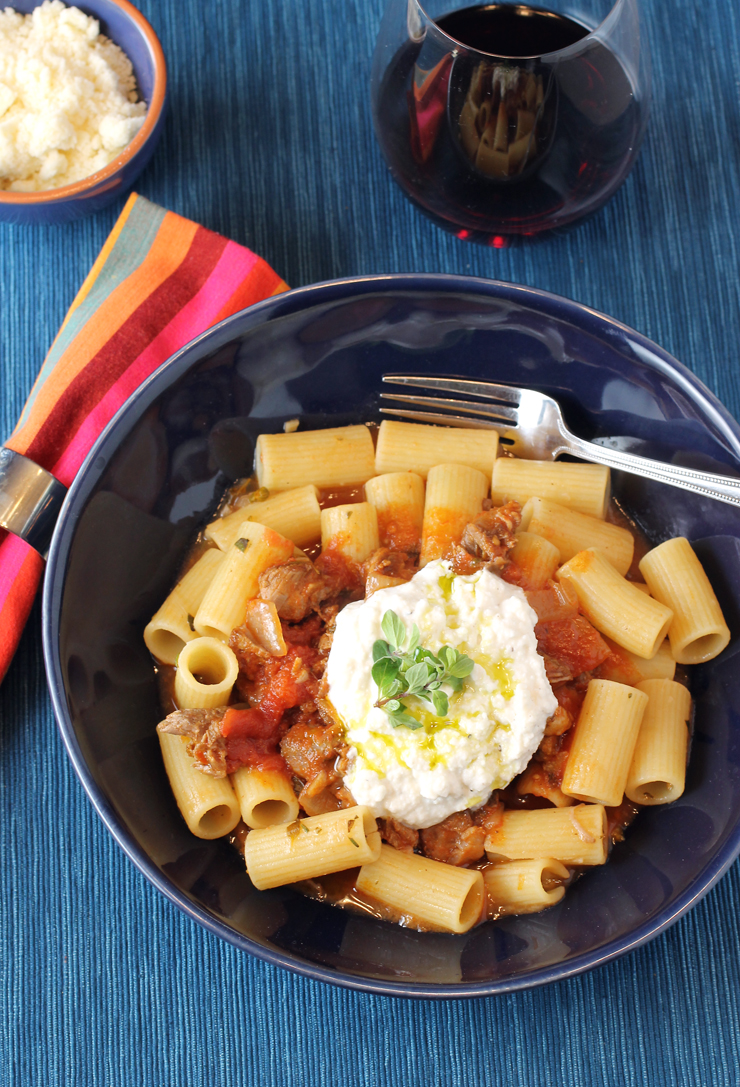
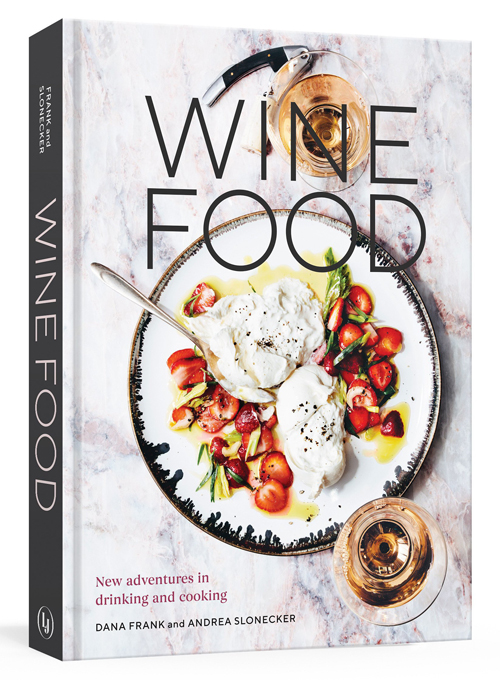
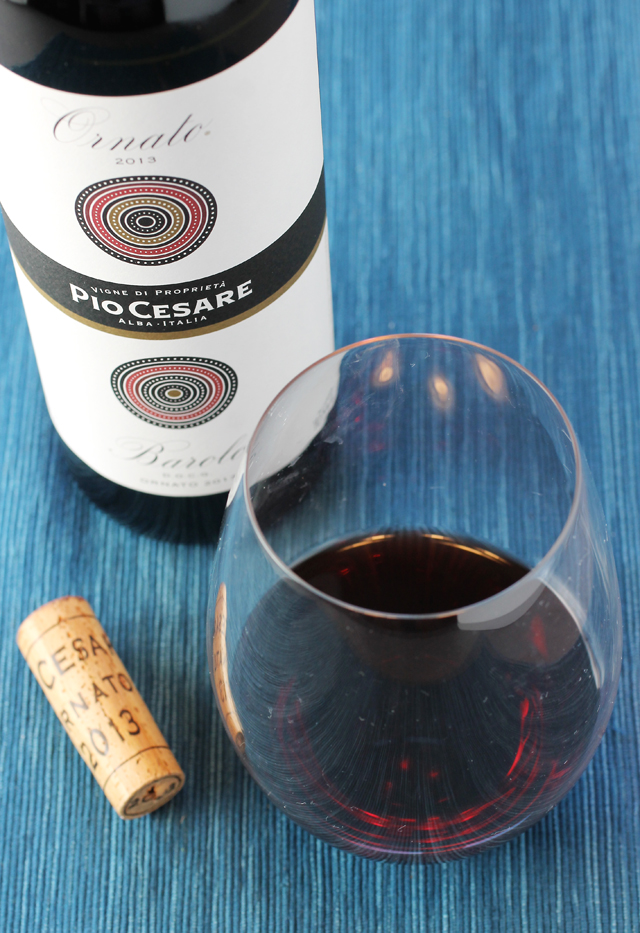
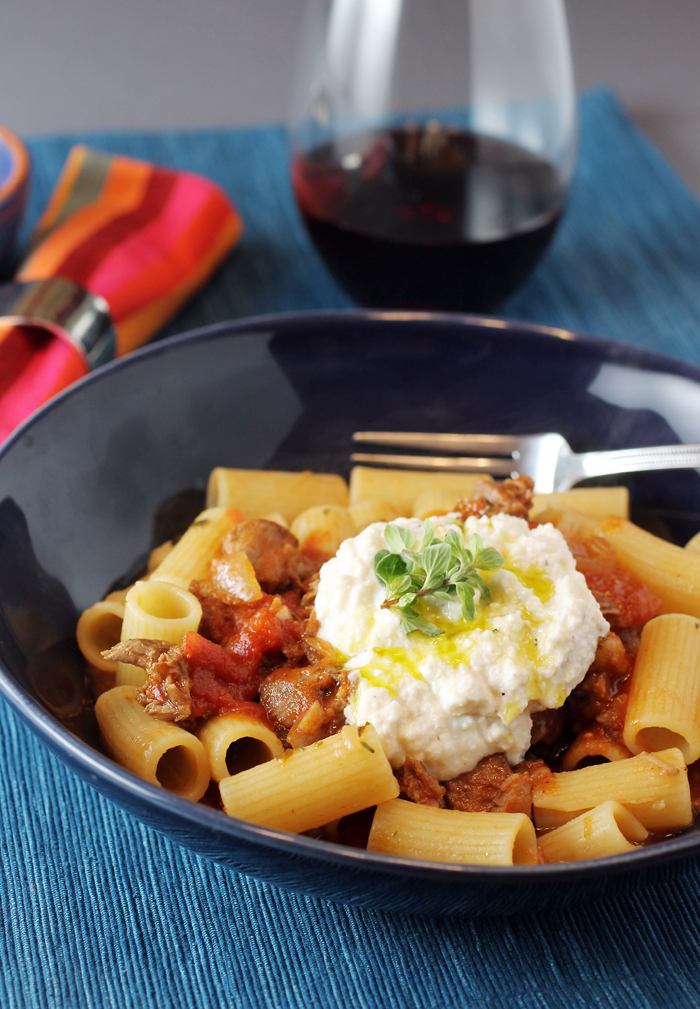
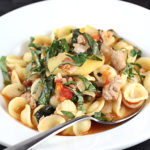

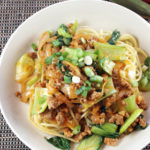
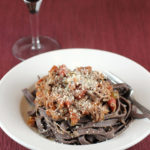
Fantastic photos of a delicious meal…looks like I can grab the fork and take a bite. It seems we have been eating similarly as I just made a pork ragù for pappardelle and before that lamb lasagna. 🙂
Karen: We must be on the same winter wavelength. Nothing beats a meaty, rich pasta when the nights are cold and dark.
I don’t often make a lamb ragu, and when I do I always wonder why it isn’t a regular for me. So good! This looks terrific — excellent recipe. Thanks.